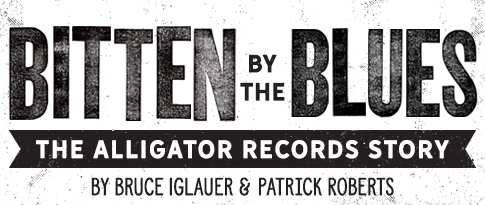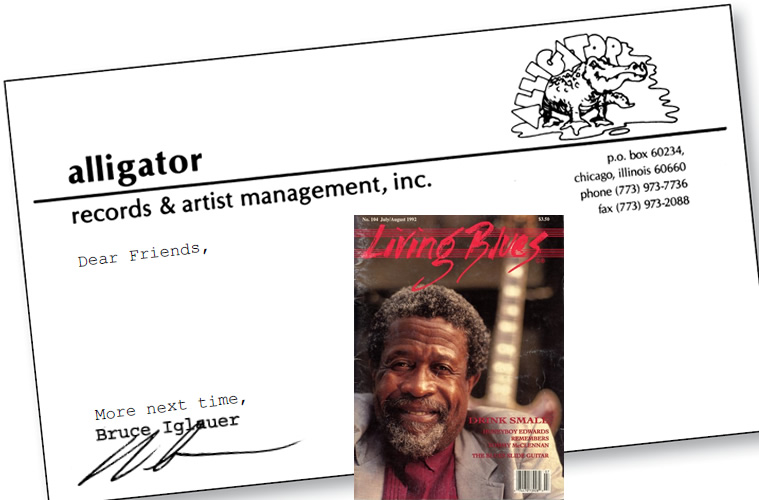Dear Friends,
Well, as usual, I’m exhausted from a series of long nights in the studio. This time I’m mixing the upcoming release by the roughest, rawest band on Alligator, Lil’ Ed and the Blues Imperials. It should be released just about the time you read this. It’s called “What You See Is What You Get,” which is exactly right. I’m sure if you’ve ever seen this wonderful houserockin’ band live, you’ll get the record. If you haven’t, you still have a chance.
Something hot and new for those of you who love the rockin’ side of blues guitar, and slide in particular—we’ve just released the U.S. debut by a phenomenal Australian (!!) guitarist, Dave Hole. This is a self-produced album by a guy who’s just beginning to become known in his own country (he lives and plays in Perth, which is thousands of miles from just about anywhere). We were turned on to Dave by Jas Obrecht of GUITAR PLAYER magazine, who called him “magnificent, staggering, almost beyond belief. Utterly blues approved.” Fairly convincing, eh? Believe me—blues doesn’t come at a higher energy level. If you like Johnny Winter, you’re guaranteed to love Dave Hole.
I promised last time to tell you about the making of Son Seals’ most controversial album, “Chicago Fire.” This was back in 1980, when Alligator was just beginning to become a “real” record company (in other words, to release more than two records a year). Son had become one of our most popular artists, ever since he was hailed in the national press as one of the most exciting bluesmen of his generation. We had already cut three albums — “The Son Seals Blues Band” (Son at his youthful rawest with only three backing musicians), “Midnight Son” (Son’s first experiment with a bigger band and horns and still considered a classic) and “Live And Burning” (exactly what the title says.) For Son, it ws time to stretch, to experiment beyond the standard blues forms and lyrics.
He wrote a series of challenging, unusual songs for this album—”Gentleman From The Windy City,” “Buzzard Luck,” “Watching Every Move You Make,” “landlord At My Door” that employed flashing horn figures, strange rhythm shifts and layered keyboards, all wrapped around the trademark hard-as-nails Seals guitar and vocals. He was really feeling his creative oats, oats, and although I was scared what the purisets would say, I wanted to encourage him. I believe (and believed) that the blues can’t sit still, and it seems to me that the artists sometimes have to be a bit more progressive than the fans.
We built the arrangements around Son’s road band, with longtime bassist Snapper Mitchum, the fiery young David Anderson on drums, Mark Weaver on rhythm guitar and an unsung veteran, King Solomon (not the L.A. guy) on keyboards. Solomon was a gentle older guy with a strong jazz background who had been with Son about a year. He lived in a converted old coachhouse on the South Side, and we rehearsed the entire album in his tiny living room.
As usual, Son ran things with an iron hand, directing everyone in their parts and rehearsing the band for hours. It was only occasionally that Son would let me or Snapper or Solomon make an arrangement suggestion.
Finally, when the rhythm section parts were firmly established, Son called in the man who was becoming the stalwart of “The Alligator Homs,” arranger/trombonist Bill MacFarland.
He called on Bill to translate his ideas into horn charts, and to put together the horn section for the studio. Bill worked mostly with Son’s ideas but when Son let him loose, he came up with some hot licks of his own, like the unpredictable horn figures for the end of “Watching Every Move You Make.” Son even let me live out a fantasy of my own by having Bill construct horn charts for “I’m Not Tired” around the licks that I came up with!
More next time,
Bruce Iglauer

